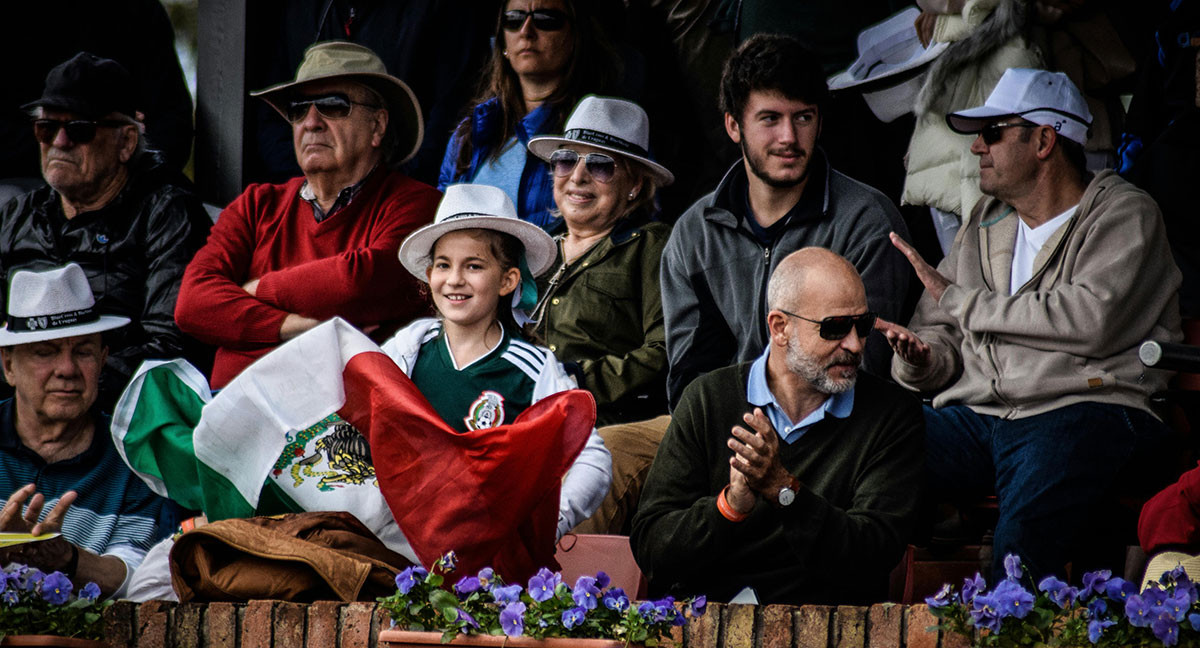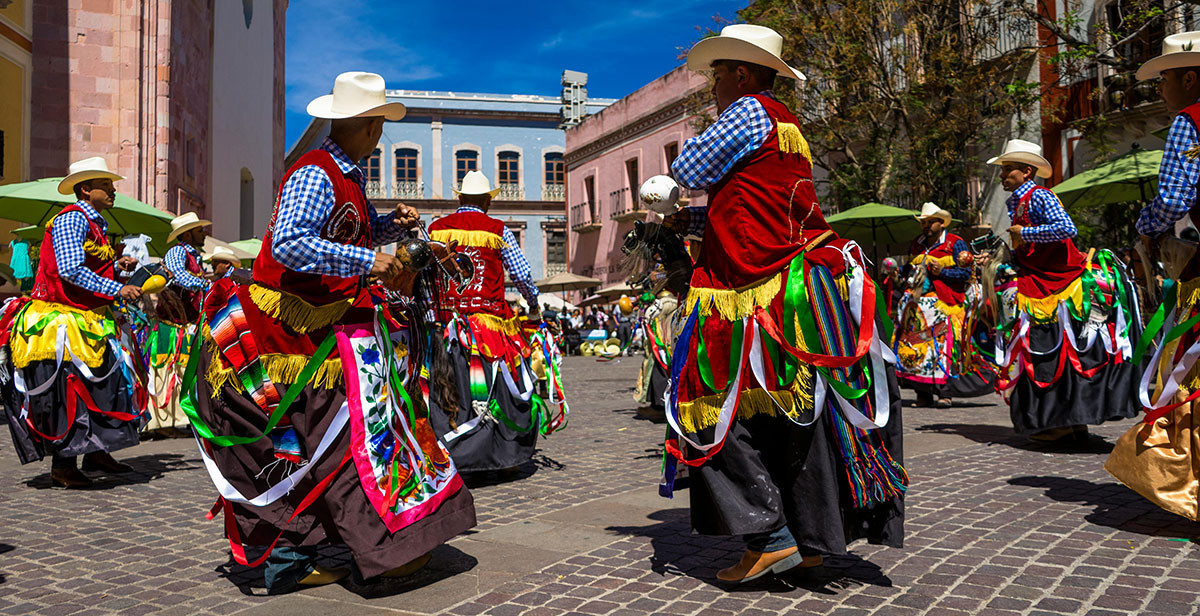Is Puerto Rican Spanish Different From Mexican Spanish? Absolutely! While both are variations of the Spanish language, they possess distinct nuances in pronunciation, vocabulary, and cultural influences. At gaymexico.net, we help you navigate the linguistic landscape of Mexico, ensuring a richer, more authentic travel experience within the LGBTQ+ community by providing helpful context. Understanding these differences enhances your cultural immersion, fostering meaningful connections and a deeper appreciation for the diverse expressions of Spanish across the Americas, offering unique insights into LGBTQ+ life in Mexico, gay travel experiences, and fostering cultural sensitivity.
1. Unveiling Mexico and Puerto Rico: A Quick Comparison
Before diving into the specifics, let’s establish a basic understanding of Mexico and Puerto Rico with this easy to read table:
| Feature | Mexico | Puerto Rico |
|---|---|---|
| Location | North America | Caribbean |
| Population | ~130 million | ~3.3 million |
| Political Status | Sovereign nation | U.S. territory |
| Capital | Mexico City | San Juan |
| Languages | Spanish (primary), 63 indigenous langs | Spanish and English |
| Cuisine | Tacos, enchiladas, mole | Mofongo, arroz con gandules, lechón asado |
| Music | Mariachi, banda, cumbia | Salsa, reggaeton, bomba, plena |
| LGBTQ+ Scene | Vibrant in major cities (Mexico City, Guadalajara, Puerto Vallarta) | Growing scene in San Juan and tourist areas |
 Aerial view of Puerto Vallarta, Mexico.
Aerial view of Puerto Vallarta, Mexico.
2. The Roots of Language: Historical and Cultural Context
Language is inextricably linked to history and culture. To understand the differences between Mexican and Puerto Rican Spanish, it’s crucial to explore the historical and cultural influences that have shaped each dialect.
2.1. Puerto Rico: A Tapestry of Influences
Puerto Rico’s history is a blend of Taíno, Spanish, African, and American influences. Originally inhabited by the Taíno people, the island was colonized by Spain in 1493. The introduction of slavery and sugar plantations left a lasting impact on the island’s demographics and culture.
After the Spanish-American War in 1898, Puerto Rico became a U.S. territory. This transition brought about significant changes, including U.S. citizenship for Puerto Ricans in 1917 and the establishment of the Commonwealth of Puerto Rico in 1952. The island’s close relationship with the United States has led to significant English influence on its Spanish dialect.
2.2. Mexico: A Land of Ancient Civilizations and Colonial Legacy
Mexico boasts a rich history that stretches back to ancient civilizations like the Aztecs and the Mayans. The Spanish conquest in 1521 marked the beginning of three centuries of colonial rule, during which indigenous and Spanish cultures intertwined.
The Mexican War of Independence in the early 19th century led to the establishment of Mexico as a sovereign nation. The Mexican Revolution of 1910-1921 further transformed the country, leading to social reforms and the recognition of indigenous rights. Mexican Spanish reflects this history, incorporating indigenous vocabulary and retaining distinct regional variations.
3. Sounding Different: Phonetics and Pronunciation
One of the most noticeable differences between Mexican and Puerto Rican Spanish lies in their pronunciation. These differences stem from various factors, including historical influences, regional accents, and contact with other languages.
3.1. Decoding Puerto Rican Spanish
Puerto Rican Spanish is characterized by several distinct phonetic features:
- The Elusive “R”: The letter “R” often sounds like an “L,” especially at the end of a word. “Puerto Rico” may sound closer to “Puelto Rico.”
- The Disappearing “D”: The letter “D” at the end of a syllable is often weakened or omitted. “Cansado” (tired) might be pronounced “cansao.”
- The Aspiration of “S”: The letter “S” at the end of syllables is frequently aspirated, resembling an “H” sound, or dropped altogether. “Los amigos” (the friends) can sound like “Loh amigos.”
- Nasalization: Vowels preceding nasal consonants (m, n, ñ) may be nasalized, giving them a nasal quality.
- Soft “J” and “G”: The “J” (and “G” before “E” or “I”) sound is softened, almost vanishing or becoming a breathy sound.
3.2. Understanding the Mexican Accent
Mexican Spanish generally features a clearer and more consistent pronunciation than Puerto Rican Spanish. Some key features include:
- Pronunciation of Single Phonemes: Mexican Spanish is known for its relatively consistent pronunciation of single phonemes, making it easy to understand for Spanish learners.
- Varied “X”: The letter “X” can have different pronunciations, sometimes like “S” and other times like “J,” especially in words of indigenous origin.
- Consistent “S”: Unlike some Caribbean dialects, the “S” sound is consistently pronounced in Mexican Spanish.
- Full Consonants: Mexican Spanish tends to fully pronounce consonants, even at the end of words.
3.3. Regional Variations in Mexican Spanish
Mexican Spanish is not monolithic. Various regional accents reflect the country’s diverse geography and cultural influences:
- Central Accent: Often considered the “standard” accent, characterized by clear pronunciation and a moderate pace.
- Northern Accent: Features a stronger intonation and clipping of word endings.
- Coastal Accent: Incorporates a melodious intonation and softening of consonants, similar to Puerto Rican Spanish.
- Yucatán Accent: Heavily influenced by Mayan languages, with unique intonation patterns and vocabulary.
4. Grammar and Syntax: Similar Foundations, Subtle Divergences
While Mexican and Puerto Rican Spanish share the same grammatical foundation, some subtle differences in verb conjugation, pronoun placement, and the influence of English set them apart.
4.1. Verb Conjugation and Usage
Mexican Spanish typically uses “tú” for informal situations, with its corresponding verb conjugations. In contrast, Puerto Rican Spanish may use “usted” in informal contexts more often.
4.2. Pronoun Placement
Both dialects generally follow standard Spanish rules for pronoun placement. However, Puerto Rican Spanish may exhibit more flexibility in pronoun placement in rapid, colloquial speech.
4.3. Influence of English
Due to Puerto Rico’s status as a U.S. territory, its Spanish dialect has incorporated more English syntax than Mexican Spanish.
4.4. Shared Grammatical Traits
Despite the differences, Mexican and Puerto Rican Spanish share several grammatical similarities:
- Rare Use of “Voseo”: The use of “vos” instead of “tú” is virtually nonexistent in both regions.
- Standard Use of “Leísmo,” “Laísmo,” and “Loísmo”: Both variations adhere to standard Spanish practices regarding direct and indirect object pronouns.
- Future Tense Simplification: In informal speech, both dialects may use “ir + a + infinitive” instead of the future tense conjugation.
- Use of “Que” and Subjunctive: Both dialects use “que” to introduce subjunctive moods.
5. Culture Through Language: Food, Music, and Social Customs
Language is a reflection of culture. The unique cultural backgrounds of Mexico and Puerto Rico have deeply influenced their respective Spanish dialects.
5.1. Gastronomic Influences
Puerto Rican cuisine has enriched its Spanish dialect with words like “mofongo” and “lechón.” Mexican cuisine has contributed words like “tacos” and “salsa” to the everyday vocabulary.
5.2. Musical Expressions
Music is integral to both Puerto Rican and Mexican culture. Puerto Rican genres like salsa and reggaeton have introduced terms like “perreo,” while Mexican musical traditions have contributed words like “corrido” and “banda.”
5.3. Religious Traditions
Mexico’s predominantly Catholic traditions have influenced its language with phrases like “Si Dios quiere” (God willing) and “Vaya con Dios” (Go with God). Puerto Rico’s blend of Christianity with African and indigenous beliefs has enriched its dialect with unique references to spirits and saints.
5.4. Social Customs
The importance of community in Puerto Rico is reflected in terms like “compai” and “comai,” while Mexican Spanish incorporates terms of endearment like “mijo” and “mija,” underscoring the importance of close familial bonds.
 Dancing couple in Puerto Rico.
Dancing couple in Puerto Rico.
6. A World of Words: Vocabulary Differences
Beyond pronunciation and grammar, Mexico and Puerto Rico boast a wide range of local vocabulary words that can take some getting used to.
| English | Mexico | Puerto Rico |
|---|---|---|
| Shoelaces | Agujetas | Gabetes |
| Trashcan | Bote de basura | Zafacón |
| Peanut | Cacahuate | Maní |
| Cake | Pastel | Bizcocho |
| Tomato | Jitomate | Tomate |
| Banana | Plátano | Guineo |
7. Navigating False Friends
While Spanish speakers from Mexico and Puerto Rico can generally understand each other, some “false friends” – words that look or sound similar but have different meanings – can lead to confusion.
| Spanish | Mexico Meaning | Puerto Rico Meaning |
|---|---|---|
| Bolero | Shoeshine boy | Short vest, slow music |
| Chavo | Young boy | One penny |
| Coche | Car | Stroller |
| Pastel | Cake | Local food similar to tamales |
8. Demonstrating the Differences: Example Sentences
Here are a few examples illustrating the differences between Mexican and Puerto Rican Spanish:
| Category | Mexican Spanish | Puerto Rican Spanish | English Translation |
|---|---|---|---|
| Drunk | Juan siempre es el más borracho en todas las fiestas. | Después de dos tragos, ya está medio ajuma’o. | Juan is always the drunkest at any party. |
| Money | Necesito ganar más lana para pagar mis vacaciones. | ¿Tienes chavos para el café? | I need to earn more money for my vacation. |
| Oranges | Me gustaría un jugo de naranja fresco. | Compra unas chinas para el desayuno. | I would like a fresh orange juice. |
9. Delving Deeper: The Variety of Spanish Dialects
While Mexican and Puerto Rican Spanish are two prominent dialects, the Spanish language encompasses a wide range of variations across the globe.
Here’s a glimpse at some other Spanish dialects:
- Castilian: The standard dialect of Spain, characterized by the distinction between C/Z and S sounds.
- Andalusian: Spoken in Southern Spain, known for its dropping or aspiration of final S sounds.
- Rioplatense: Predominant in Argentina and Uruguay, notable for the use of “vos” instead of “tú.”
- Caribbean: Spoken in Cuba, the Dominican Republic, and Puerto Rico, characterized by rapid speech and the dropping or aspiration of S sounds.
- Equatoguinean Spanish: As the only Spanish-speaking country in Africa, Equatorial Guinea has its own accent and unique linguistic influences.
It’s important to remember that Catalan is a unique language, not a dialect of Spanish.
10. Answering Your Questions: FAQs
10.1. Is Puerto Rican Spanish a Dialect?
Yes, Puerto Rican Spanish is a recognized dialect with its unique characteristics in pronunciation, vocabulary, and grammar.
10.2. Is Mexican Spanish a Dialect?
Yes, Mexican Spanish is also a dialect with distinct features influenced by indigenous languages and regional variations.
10.3. Do I Need to Speak Spanish in Puerto Rico?
While English is widely spoken in tourist areas, speaking Spanish in Puerto Rico enhances your cultural experience and allows for deeper connections with locals.
11. Conclusion: Embrace the Diversity
As you navigate the fascinating world of Spanish, remember that each dialect tells a story. Understanding the nuances of Mexican and Puerto Rican Spanish enriches your travel experiences and fosters meaningful connections with the LGBTQ+ community. Whether you’re exploring gay bars in Mexico City or relaxing on the beaches of Puerto Rico, embrace the linguistic diversity and celebrate the richness of Hispanic culture!
Ready to explore the LGBTQ+ scene in Mexico? Visit gaymexico.net for insider guides, event listings, and community connections. Contact us at Address: 3255 Wilshire Blvd, Los Angeles, CA 90010, United States. Phone: +1 (213) 380-2177.